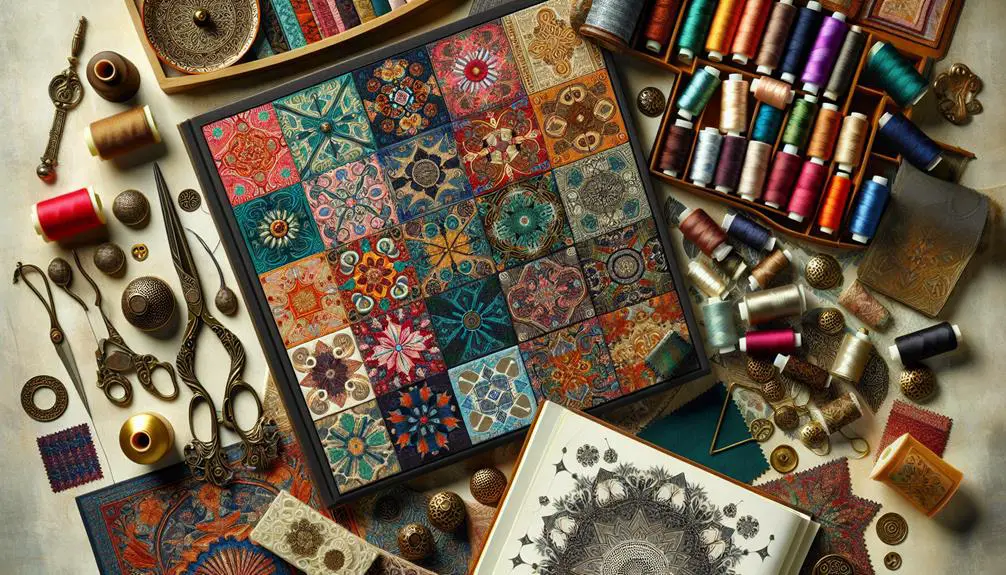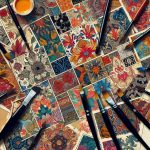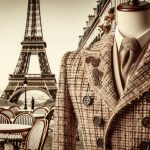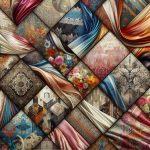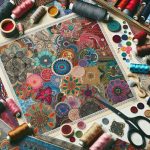Did you know that the global fabric industry is valued at over $1 trillion? This staggering figure underscores the immense influence of fabric designers like William Morris, Coco Chanel, and Marimekko. Each of these visionaries has redefined fabric design standards, blending tradition with innovation. For instance, Morris's intricate patterns and Chanel's practical yet elegant fabrics have left indelible marks on the industry. But what exactly sets these designers apart, and how have their contributions continued to shape today's textile trends? Let's explore the unique legacies they've created and why their work remains influential.
Table of Contents
Key Takeaways
- William Morris transformed 19th-century textile arts with intricate patterns and rich colors, advocating for quality craftsmanship during the Industrial Revolution.
- Mariano Fortuny merged Venetian influences with innovative pleating techniques, redefining early 20th-century fabric design.
- Coco Chanel revolutionized fashion by introducing practical fabrics like jersey and tweed, offering timeless elegance and comfort.
- Tula Pink's quilting fabrics feature bold colorways and whimsical motifs, encouraging detailed exploration and storytelling in quilting.
- Liberty of London is renowned for timeless elegance, intricate floral patterns, and a commitment to superior quality and British heritage.
William Morris
William Morris's innovative designs and dedication to craftsmanship transformed textile arts in the 19th century. As a key figure in the Arts and Crafts Movement, Morris believed in the significance of beauty in everyday objects. He asserted that quality craftsmanship should be accessible to all, not just the wealthy elite. His philosophy was a direct response to the mass production and poor quality of goods brought about by the Industrial Revolution.
When you observe Morris's work, you can't help but notice the intricate patterns and rich colors that define his designs. One of his most significant contributions was the wallpaper revolution. Morris's wallpapers featured detailed, nature-inspired motifs, which were a stark contrast to the dull and repetitive designs of his time. By employing traditional hand-printing techniques, he guaranteed each piece was unique and of the highest quality.
Morris's influence extends beyond just aesthetics; he championed the integration of art into daily life. His dedication to quality and beauty in design has left a lasting legacy, inspiring future generations of designers.
If you're passionate about mastering textile arts, studying Morris's work is essential.
Mariano Fortuny
Although often overshadowed by his contemporaries, Mariano Fortuny's innovative fabric designs and pioneering techniques greatly influenced early 20th-century textile arts. His work is a tribute to the merging of art and craftsmanship, and if you're driven to master textile design, you need to comprehend his contributions.
Fortuny drew heavily from Venetian influence, infusing rich historical and cultural elements into his textiles. His studio in Venice became a hub of creativity where he experimented with dyes, patterns, and textures, creating fabrics that were both luxurious and avant-garde. His use of natural and synthetic dyes allowed him to produce vivid, lasting colors that set his textiles apart.
One of Fortuny's most groundbreaking contributions was his pleating techniques. He developed a method to create finely pleated silk, which resulted in the iconic Delphos gown. This technique involved intricate hand-pleating that gave the fabric a fluid, sculptural quality. The process was so innovative that it remained a closely guarded secret.
To truly appreciate the depth of Fortuny's impact, you need to explore his methodologies and understand how his Venetian influence and pleating techniques redefined fabric design, setting new standards in the textile arts.
Coco Chanel
While Fortuny brought a sculptural quality to textiles, Coco Chanel revolutionized fashion by introducing fabrics that combined elegance with practicality. You see, Chanel's approach was rooted in liberating women from the constraints of rigid, uncomfortable clothing. Her designs embodied a fashion revolution, offering timeless elegance that was both chic and comfortable.
Chanel popularized the use of jersey fabric, previously relegated to men's underwear, in high fashion. This choice was groundbreaking, providing a soft, flexible material that allowed women to move freely. Chanel also introduced tweed, transforming it into a symbol of sophistication and everyday luxury. Her iconic tweed suits became synonymous with modernity and refinement.
Here's a quick look at some of Chanel's impactful contributions:
| Fabric | Key Contribution | Impact |
|---|---|---|
| Jersey | Comfortable elegance | Revolutionized women's wear |
| Tweed | Sophisticated luxury | Became a symbol of modernity |
| Silk | Fluidity and grace | Enhanced the femininity of fashion |
| Gabardine | Practicality and style | Merged function with high fashion |
Vera Neumann
Vera Neumann transformed textile design with her vibrant, hand-painted patterns that brought art into everyday life. You can't miss her bold colors and whimsical motifs that turned ordinary items into extraordinary pieces. Neumann's work wasn't just about aesthetics; it was about infusing joy and creativity into the fabric of daily living.
When you study her iconic scarves, you'll see how she skillfully combined bold primary colors with intricate, playful designs. Her patterns varied from abstract florals to whimsical motifs like butterflies and birds, each piece reflecting her unique artistic vision. Neumann believed that art should be accessible to everyone, and she accomplished this by translating her paintings into affordable, wearable art.
Her innovative approach extended beyond scarves to include home textiles like table linens and bedding. Each piece radiated a sense of elegance and individuality, making them treasured additions to any home. By focusing on high-quality materials and artisanal craftsmanship, Neumann ensured that her creations weren't only visually stunning but also long-lasting.
In essence, Vera Neumann's legacy lies in her ability to transform everyday objects into vibrant expressions of art, enriching lives with her bold, colorful designs.
Marimekko
When you think of Marimekko, you can't ignore their bold, iconic patterns that have left a lasting mark on fabric design.
You'll notice how their design philosophy has evolved, embracing both tradition and innovation.
This balance has contributed notably to their enduring influence in the industry.
Iconic Patterns Development
Marimekko's bold and vibrant patterns have revolutionized the world of textile design. You can trace their iconic development back to a seamless blend of contemporary influences and global inspirations.
By drawing from diverse cultures and modern art movements, Marimekko has created a unique aesthetic that stands out in the fabric industry. Their designs often reflect an eclectic mix of styles, harmonizing elements from various traditions into something fresh and innovative.
What sets Marimekko apart is their ability to marry traditional techniques with modern interpretations. Their designers don't shy away from experimenting with classic methods like screen printing and hand-painting, infusing these age-old practices with a contemporary twist.
This combination results in patterns that are both timeless and avant-garde, appealing to those who appreciate the artistry and craftsmanship behind each piece.
Design Philosophy Evolution
The evolution of Marimekko's design philosophy showcases a dynamic journey of innovation and tradition. By blending modern design theory with deep-rooted artistic inspiration, Marimekko has consistently pushed boundaries while honoring its heritage. You'll notice that the brand's early years were marked by bold, vibrant patterns that challenged conventional aesthetics, a proof of its founders' vision of creating more than just fabric─crafting an entire lifestyle.
Marimekko's approach to design theory has always emphasized simplicity and functionality, yet it never shied away from making a striking visual impact. This balance is evident in their iconic prints, which seamlessly merge art and utility. When you explore their collections, you can see how the designers draw from nature, architecture, and even everyday objects, transforming them into abstract, yet relatable motifs.
Artistic inspiration at Marimekko isn't static; it evolves with global trends and cultural shifts. You'll find that each designer brings their unique perspective, enriching the brand's diverse tapestry. By fostering a collaborative environment, Marimekko ensures that innovation thrives while staying true to its core values. This philosophy of perpetual evolution and respect for tradition keeps Marimekko at the forefront of fabric design.
Zandra Rhodes
Zandra Rhodes revolutionized fabric design with her bold patterns and vibrant colors. She didn't just stop at creating eye-catching textiles; Rhodes masterfully intertwined fashion collaborations with her innovative vision. By partnering with high-profile designers and brands, she confirmed her fabrics weren't merely materials but central elements of runway sensations. You might recall her celebrated work with the likes of Valentino and Topshop, where her textiles transformed garments into wearable art.
Rhodes's approach to textile experimentation sets her apart. She employs unconventional techniques and materials, pushing the boundaries of what fabric can achieve. Her designs often feature unique motifs inspired by various cultures and historical periods, reimagined with a contemporary twist. This fearless exploration of texture and form makes her work both timeless and forward-thinking.
If you're aiming for mastery in fabric design, studying Rhodes's career offers invaluable insights. She demonstrates the importance of marrying technical skill with an unwavering creative vision. Emulating her boldness in experimentation and her strategic fashion collaborations can elevate your work from mere design to true innovation. By embracing Rhodes's principles, you stand to not only create but also inspire and revolutionize.
Kaffe Fassett
Rhodes's daring experimentation finds a kindred soul in Kaffe Fassett, whose vibrant and intricate designs have made an enduring impact on the world of fabric artistry. You can't discuss fabric design without acknowledging Fassett's colorful creations and their transformative influence. His work, characterized by bold patterns and a kaleidoscope of hues, offers a masterclass in blending tradition with modernity.
Fassett's artistic inspirations span a wide range of sources. From the rich tapestries of historic Europe to the vivid textiles of Central Asia, he weaves diverse cultural elements into his fabric designs. You'll notice his extraordinary ability to harmonize seemingly clashing colors and patterns, creating a visual symphony that's both dynamic and cohesive.
His approach is hands-on and passionate. Fassett believes in the power of immersion, often advising aspiring designers to surround themselves with color and form. By doing so, you discover endless possibilities for creativity. His books, workshops, and exhibitions serve as essential resources for anyone serious about mastering the art of fabric design.
In essence, Kaffe Fassett's work reminds you that fabric isn't just functional—it's a canvas for boundless expression and innovation.
Anna Maria Horner
You'll be captivated by Anna Maria Horner's vibrant color palettes and eclectic pattern designs.
Her innovative techniques have transformed the textile industry, making her a standout figure among fabric designers.
Let's explore how her unique style and creativity have influenced modern fabric design.
Vibrant Color Palettes
How does Anna Maria Horner's masterful use of vibrant color palettes set her fabric designs apart? It starts with her deep understanding of color psychology and trend forecasting. She knows how colors can evoke emotions and set moods, and she uses this knowledge to create fabrics that resonate on a deeper level. Her ability to forecast trends ensures that her designs are not only current but also ahead of the curve, making them must-haves for any project.
Anna Maria's vibrant palettes are also a result of her creative collaborations and cultural influences. She draws inspiration from a variety of cultures, infusing her designs with a global perspective that adds richness and depth. Collaborating with other creative minds, she continually pushes the boundaries of what's possible in fabric design.
| Color Palette | Emotional Impact | Cultural Influence |
|---|---|---|
| Warm Tones | Comfort, Energy | Mediterranean |
| Cool Tones | Calm, Serenity | Scandinavian |
| Bold Primaries | Excitement, Joy | Pop Art Movement |
| Earthy Neutrals | Stability, Warmth | Native American |
Eclectic Pattern Designs
Anna Maria Horner's eclectic pattern designs showcase a unique blend of traditional motifs and modern aesthetics, making each piece a work of art. When you explore her collections, you're immediately drawn to her bold geometrics that command attention. These aren't mere repetitions; they're modern interpretations of classic designs that bring a fresh perspective to your fabric choices.
You'll notice how she seamlessly integrates intricate florals and abstract shapes, creating a dynamic visual experience. Each pattern is thoughtfully crafted, ensuring that it stands out whether used in fashion, home decor, or quilting projects. Her approach is both daring and sophisticated, allowing you to express a uniquely refined style.
Moreover, Anna Maria's use of color within her eclectic patterns is nothing short of masterful. She combines unexpected hues that enhance the depth and complexity of her designs. By doing so, she offers you the opportunity to create projects that aren't only visually stunning but also resonate with a sense of timelessness and innovation.
Incorporating Anna Maria Horner's fabrics into your work means embracing a tapestry of bold geometrics and modern interpretations. It's an invitation to elevate your craft to new heights.
Textile Innovation Techniques
Exploring the realm of textile innovation, you'll notice that Anna Maria Horner utilizes pioneering techniques that elevate traditional fabric design. Her approach combines artistic creativity with state-of-the-art technology, distinguishing her in the industry.
One of her most remarkable contributions is her dedication to sustainable practices. She's not simply creating exquisite fabrics; she's also ensuring that her methods minimize the environmental impact. By choosing eco-friendly dyes and organic materials, Horner demonstrates that sustainability and high-quality design can complement each other.
Digital printing techniques play a crucial role in Horner's work. In contrast to traditional methods, digital printing allows for more intricate, vivid patterns with fewer restrictions. This method not only expands the range of design possibilities but also reduces waste, aligning with her sustainable values.
The accuracy and efficiency of digital printing empower her to bring intricate, multi-layered designs to fruition, a task that would be difficult with conventional methods.
As you explore further into Horner's techniques, you'll admire her seamless fusion of innovation and artistry. Her work serves as a prime example of how modern technology can transform fabric design while upholding sustainability principles.
Tula Pink
Tula Pink's unique and vibrant fabric designs have revolutionized the quilting industry. When you immerse yourself in her collections, you'll find bold colorways that captivate the eye and bring quilts to life. Her fearless use of striking hues sets her apart, making each piece a statement in and of itself.
But it's not just the colors that make Tula Pink's fabrics special; it's also her whimsical motifs. From fantastical animals to intricate florals, her designs weave narratives that transform simple quilts into storytelling masterpieces.
In mastering the art of quilting with Tula Pink's fabrics, you embrace both creativity and precision. Her patterns demand attention to detail, rewarding you with pieces that are both visually stunning and deeply personal. She doesn't just provide fabric; she offers a canvas that encourages you to push boundaries and explore new techniques.
Liberty of London
Renowned for their timeless elegance and intricate floral patterns, Liberty of London's fabrics have become a staple in both fashion and quilting. When you explore Liberty's collections, you're not just examining fabric; you're immersing yourself in a piece of British heritage. Each design, meticulously crafted since 1875, embodies a rich history of artistic excellence and cultural importance.
You'll find that the hallmark of Liberty of London's fabrics lies in their distinctive floral motifs. These patterns are more than just decorative; they're a celebration of botanical beauty and a tribute to the brand's commitment to quality and detail. Whether it's the iconic Tana Lawn cotton or luxurious silk, each fabric showcases a blend of tradition and innovation, making it perfect for your creative projects.
When you choose Liberty fabrics, you're not only selecting superior quality but also a piece of history that has influenced generations of designers. The brand's dedication to preserving its British heritage while continually evolving has made its fabrics a cherished choice for those who seek both beauty and substance.
Immerse yourself in Liberty of London's world, and you'll understand why their fabrics are treasured by artisans worldwide.
Frequently Asked Questions
How Do Fabric Designers Typically Source Their Materials?
You know what they say, "Waste not, want not." Fabric designers typically source their materials through sustainable sourcing and traditional methods, ensuring quality and environmental responsibility. They seek mastery in craftsmanship and eco-conscious practices.
What Role Does Technology Play in Modern Fabric Design?
You'll find that technology revolutionizes modern fabric design through digital printing and creative software, enabling precise patterns. It also promotes sustainable practices and textile innovation, ensuring designs are both cutting-edge and environmentally friendly.
How Has Eco-Friendliness Influenced Fabric Design Trends?
Imagine the impact—eco-friendliness has revolutionized fabric design trends. You now see sustainable practices and innovative materials driving change, pushing designers to craft stunning, environmentally conscious textiles that redefine the future of fashion and home décor.
What Are the Key Differences Between Fabric Design and Fashion Design?
In fabric design, you focus on the creative process and industry standards. Fashion design requires an artistic vision and practical application. While fabric design emphasizes patterns and textures, fashion design transforms these elements into wearable art.
How Do Fabric Designers Protect Their Intellectual Property?
You anchor your designs with copyright protection and weave licensing agreements into your strategy. These legal tools are your shield, ensuring your creative tapestry isn't unraveled by imitators, and you retain control over your artistic vision.
- How Does Ring Spun Cotton Affect Garment Fit and Shape Retention? - August 13, 2024
- What Are the Challenges in Producing Ring Spun Cotton? - August 13, 2024
- Is Ring Spun Cotton Suitable for Plus-Size Clothing? - August 13, 2024

